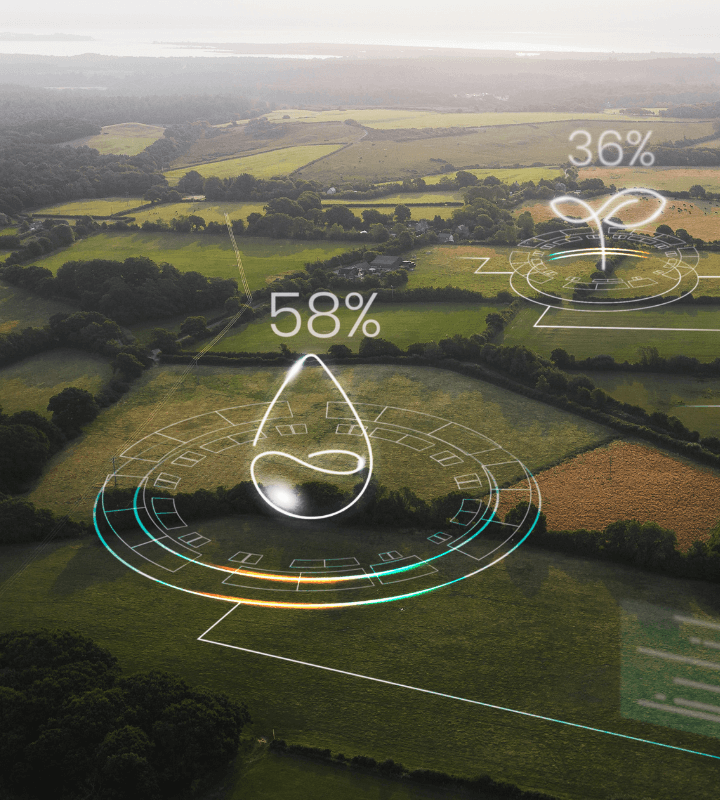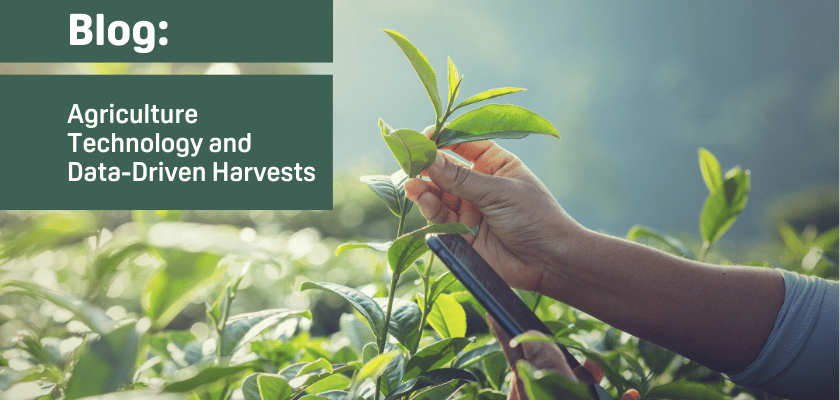

What Is Precision Agriculture? Unraveling the Modern Farming Revolution
The agri-food industry faces a great challenge due to the growing global population. In addressing these challenges, the FAO identifies precision agriculture as a potential solution. However, the practical implementation of these innovative technologies encounters obstacles, especially for small-scale farms in developing countries.
Published on 03 January 2024
Precision agriculture, often dubbed precision farming or precision ag, represents a transformative approach to modern farming, incorporating cutting-edge technologies to revolutionize traditional agricultural practices.
At its core, precision ag harnesses technology to precisely manage and monitor crucial elements of farming, such as crop yields, soil health, and resource utilization. This method relies on data-driven insights to make informed decisions, optimizing agricultural practices for efficiency and sustainability.
How Precision Agriculture Can Help the Environment?
The environmental impact of precision agriculture is profound. By precisely managing resources like water, fertilizers, and pesticides, this approach minimizes soil erosion, conserves water, and reduces the need for chemical inputs, contributing to a healthier planet.
Precision agriculture leverages various technologies to optimize farming practices. Here are some examples of precision ag applications:
-
GPS in Agriculture: GPS technology is pivotal in modern agriculture by providing accurate location data. Farmers use GPS to precisely navigate tractors and other equipment, ensuring optimal planting, harvesting, and field operations. This technology enhances efficiency and reduces resource wastage.
-
GPS Guidance Tractor: GPS-guided tractors utilize satellite signals to follow pre-determined paths with high accuracy. This enables farmers to maintain consistent row spacing, reduce overlaps, and enhance the overall precision of field operations. The result is improved crop yields and resource utilization.
-
Satellite Imagery: Satellites provide high-resolution images of fields, enabling farmers to monitor crop health, identify potential issues, and assess overall field conditions. This data aids in making timely decisions for crop management.
-
Precision Planting: Advanced planting equipment utilizes precision technology to optimize seed placement, spacing, and depth. This ensures uniform crop emergence and maximizes yields.
-
Automated Irrigation Systems: Sensors and automation in irrigation systems help farmers monitor soil moisture levels. This data is used to precisely control irrigation, prevent overwatering or underwatering, and conserve water resources.
-
Variable Rate Technology (VRT): VRT allows farmers to vary the rate of inputs, such as fertilizers and pesticides, based on specific conditions in different parts of a field. This targeted approach optimizes resource use and minimizes environmental impact.
-
Drones in Agriculture: Unmanned aerial vehicles (UAVs) or drones equipped with cameras and sensors capture aerial images of fields. These images assist in crop monitoring, disease detection, and yield prediction.
-
IoT Sensors: Internet of Things (IoT) devices, like soil sensors, weather stations, and environmental monitoring tools, provide real-time data on soil conditions, weather patterns, and other crucial factors. This information guides farmers in making precise decisions.
Precision Agriculture as a Promising Solution for Global Food Challenges
Precision Agriculture has emerged as a promising and transformative approach to agri-food.
The agri-food industry faces a great challenge due to the growing global population. The Food and Agriculture Organization (FAO) identifies precision agriculture as a potential solution in addressing these challenges. However, the practical implementation of these innovative technologies encounters obstacles, especially for small-scale farms in developing countries. To explore these intricacies further, the FAO's comprehensive literature review, titled "How can precision farming work on a small scale?" is an illuminating resource, providing valuable perspectives on the feasibility and challenges of integrating precision agriculture in diverse agricultural settings. Access the comprehensive article by FAO here.
For those interested in exploring how Doktar's innovative solutions can transform your agricultural practices, visit our website for detailed information on all our products. Stay updated with the latest developments by following us on Instagram and LinkedIn, where we share insights, tips, and updates about our technologies and their impact on modern farming.

Agriculture Technology and Data-Driven Harvests
The convergence of agriculture technology and data-driven solutions represents the next frontier of innovation in farming. With companies like Doktar leading the way, farmers can leverage these advancements to improve productivity, reduce environmental impact, and secure a more sustainable future for agriculture. Whether through precision agriculture, sustainable agriculture, or cutting-edge smart agriculture technology, the future of farming is bright, and data is at the heart of this transformation. Technology's positive impact on this future should inspire and motivate us all.

Integrating Crop Health Monitoring Systems for Better Farm Management
Crop health monitoring systems revolutionize modern agriculture by enabling real-time insights into plant health, reducing losses, and promoting sustainability. Tools like Doktar’s CropMap and Orbit integrate advanced technologies, empowering farmers with data-driven decisions. By enhancing efficiency and sustainability, these systems are essential for future-proofing agricultural operations.

Modern Agriculture: Innovative Solutions to Combat Global Food Insecurity
Modern agriculture combats global food insecurity with precision agriculture, sustainable practices, and biotechnology. Tools like IoT, automation, and crop innovations optimize resource use, enhance resilience, and ensure stable food supplies. By integrating smart technologies, agribusinesses address challenges like climate change and resource scarcity, paving the way for a sustainable food future.
